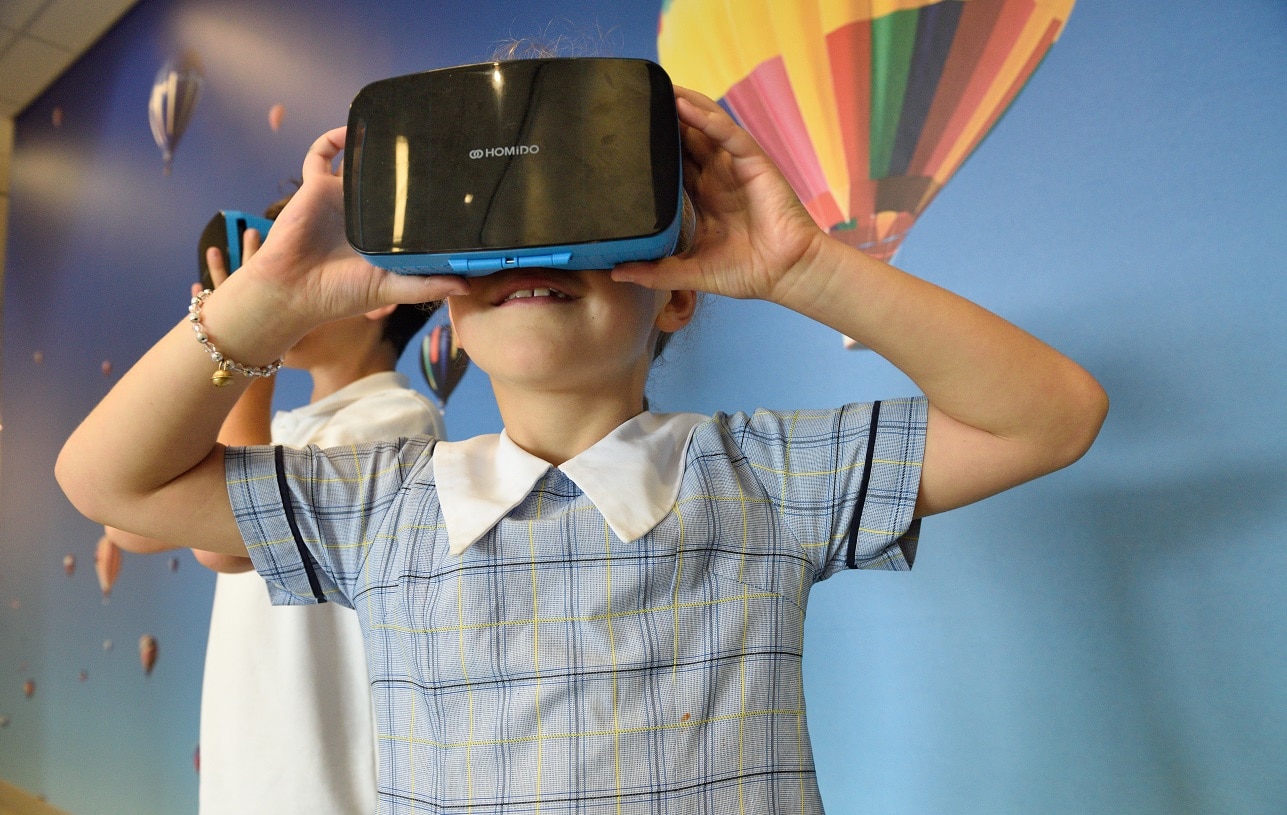Introduction
Augmented reality games have transformed the way we interact with digital entertainment. With advancements in technology, augmented reality (AR) has gained immense popularity, offering a unique and immersive gaming experience. By blending the virtual and real worlds, these games provide players with an interactive and engaging adventure like never before.
Unlike traditional video games that are confined to screens, augmented reality games take the gameplay to the next level, allowing players to interact with virtual objects and characters in their real environment. This innovative technology overlays computer-generated elements onto the real world, creating a captivating and dynamic game experience.
The concept of augmented reality games might sound futuristic, but it has already made its mark in the gaming industry. Thanks to the widespread use of smartphones and tablets, augmented reality games have become more accessible to a broader audience. Whether you’re using a mobile device or specialized augmented reality goggles, the possibilities for immersive gameplay are endless.
The appeal of augmented reality games lies in their ability to merge the virtual and physical realities seamlessly. Players can explore their surroundings while also seeing digital elements incorporated into their environment. This opens up a whole new realm of possibilities for game developers to create interactive and innovative experiences.
Moreover, augmented reality games have proven to be more than just a passing trend. They have become a mainstream form of entertainment, attracting millions of players worldwide. These games offer diverse genres, from treasure hunts and puzzle-solving adventures to action-packed battles and interactive storytelling.
As augmented reality technology continues to develop, the gaming industry is witnessing a revolutionary change. Players can now immerse themselves in virtual worlds and engage with virtual objects, characters, and challenges in an entirely new way. The possibilities for augmented reality games are continuously expanding, and the future promises even more exciting advancements.
Definition of Augmented Reality Games
Augmented reality games, often abbreviated as AR games, are interactive digital games that use augmented reality technology to overlay virtual elements onto the real world. Unlike traditional video games that are played on screens, AR games provide an immersive experience by incorporating virtual content into the player’s physical environment.
The concept of augmented reality involves enhancing the real-world environment with computer-generated elements, such as 3D graphics, sound effects, and animations. These virtual elements are seamlessly integrated into the player’s real-time view, creating an interactive and visually captivating game experience.
Augmented reality games rely on a combination of hardware and software to function. Players typically use devices such as smartphones, tablets, or specialized augmented reality goggles to view the virtual elements in their surroundings. The devices’ cameras capture the real-world environment, and the AR software analyzes the captured data to overlay the virtual content onto the live video feed.
AR games offer a wide range of genres and gameplay styles, catering to different interests and preferences. Some games may involve exploring virtual worlds, solving puzzles, or completing missions by interacting with digital objects and characters in the player’s real environment. Others may focus on multiplayer experiences, where players can engage in virtual battles or cooperative challenges with other players in real-time.
One notable aspect of augmented reality gaming is its ability to blur the boundaries between the virtual and real worlds. Players are not confined to a specific location or screen; they can move around and interact with the augmented reality content in their immediate surroundings. This freedom of movement enhances the immersion and engagement levels, making AR games a truly interactive and captivating form of entertainment.
With the continuous advancements in augmented reality technology, the possibilities for AR games are rapidly expanding. Game developers are constantly pushing the boundaries, creating innovative and engaging experiences that leverage the unique capabilities of augmented reality. As the technology continues to evolve, augmented reality games will undoubtedly play a significant role in shaping the future of the gaming industry.
How Augmented Reality Games Work
Augmented reality games operate by leveraging advanced technology to blend virtual elements with the real world in real-time. These games utilize a combination of hardware and software components to deliver an immersive and interactive gaming experience.
The process of how augmented reality games work can be summarized in several key steps:
1. Environment Recognition: Augmented reality games begin by recognizing and understanding the player’s physical environment. This is accomplished through the use of cameras on devices such as smartphones or AR goggles. The camera captures the real-world view, and the software analyzes the visual data to identify key features and objects.
2. Tracking: Once the environment is recognized, the augmented reality software continuously tracks the player’s movements and the position of the device. This ensures that the virtual elements are accurately overlaid onto the real-world view, regardless of how the player moves or rotates the device.
3. Virtual Content Integration: The next step involves integrating virtual content into the real-world view. This can include 3D graphics, animations, sound effects, and other interactive elements. The augmented reality software precisely aligns and superimposes the virtual content onto the player’s real-time view, creating the illusion of virtual objects existing in the physical environment.
4. User Interaction: To make augmented reality games truly immersive, they allow for user interaction. Players can typically interact with the virtual elements using gestures, touchscreens, or voice commands. For example, players may tap on virtual objects to collect them or swipe their fingers to launch virtual projectiles.
5. Real-time Rendering: Augmented reality games require real-time rendering to ensure a seamless experience. As the player moves or interacts with the virtual elements, the software continuously recalculates the positioning and appearance of the virtual content to maintain realism and alignment with the player’s view.
6. Feedback and Responses: Augmented reality games provide feedback and responses based on the player’s actions. This can include visual effects, sounds, vibrations, or even haptic feedback. These responses enhance the player’s immersion and provide a more engaging and dynamic gameplay experience.
Overall, augmented reality games combine the real and virtual worlds to create an enhanced gaming experience. By leveraging cutting-edge technology and clever algorithms, these games offer players the opportunity to engage with virtual content in their physical environment, opening up new and exciting possibilities for interactive gameplay.
Popular Augmented Reality Games
As augmented reality technology continues to evolve and gain mainstream popularity, numerous augmented reality games have captured the attention of gamers worldwide. These games have introduced innovative gameplay mechanics and immersive experiences that have revolutionized the gaming industry. Here are some of the most popular augmented reality games:
1. Pokémon Go: Pokémon Go took the world by storm upon its release in 2016. Utilizing augmented reality technology, players can explore the real world while capturing and battling virtual Pokémon creatures. The game encourages players to venture outdoors, discover Pokémon in different locations, and engage in battles with other players.
2. Harry Potter: Wizards Unite: This game allows players to step into the wizarding world of Harry Potter. Players become wizards and witches and embark on a magical adventure in the real world. They can cast spells, encounter magical creatures, and participate in cooperative battles with other players.
3. Ingress: Developed by Niantic, the same company behind Pokémon Go, Ingress is an augmented reality game that combines location-based gameplay with a sci-fi storyline. Players join one of two factions and compete for control over real-world landmarks. The game encourages exploration and strategic gameplay.
4. The Walking Dead: Our World: Based on the popular TV series, this game brings the zombie apocalypse to life through augmented reality. Players must fight off hordes of zombies while saving survivors and collecting weapons and resources. The game incorporates real-world maps, allowing players to experience zombie encounters in their actual surroundings.
5. Jurassic World Alive: In this game, players become dinosaur trainers and explorers. Using augmented reality technology, they can locate and capture various dinosaur species in their surroundings. The game features battles, DNA collection, and the ability to create unique hybrid dinosaurs.
6. Ghostscape: A spooky augmented reality game, Ghostscape combines horror and adventure elements. Players must explore haunted locations, solve puzzles, and uncover dark secrets. The game offers a chilling experience by integrating supernatural elements into the player’s real-world view.
These are just a few examples of the popular augmented reality games available today. With their unique blend of virtual and real-world elements, these games have captivated players and transformed the way they interact with digital entertainment.
As augmented reality technology continues to evolve and more game developers embrace its potential, we can expect to see even more exciting and immersive augmented reality games in the future.
Benefits of Augmented Reality Games
Augmented reality games offer a range of benefits that go beyond traditional gaming experiences. By combining virtual elements with the real world, these games provide unique advantages and opportunities for players. Here are some of the key benefits of augmented reality games:
1. Immersive Gameplay: Augmented reality games provide an immersive and interactive gameplay experience. By blending the virtual and real worlds, players can feel as though they are part of the game, enhancing their overall engagement and enjoyment.
2. Physical Activity: Many augmented reality games require players to be physically active and explore their surroundings. Whether it’s walking around capturing virtual creatures or participating in location-based battles, these games promote physical movement and encourage players to get out and explore.
3. Social Interaction: Augmented reality games often have a social component, allowing players to connect and interact with others. Whether it’s teaming up for cooperative missions or competing in multiplayer battles, these games foster social engagement and collaboration.
4. Education and Learning: Some augmented reality games have educational elements, providing players with opportunities to learn about various topics in a fun and interactive way. These games can enhance cognitive skills, improve problem-solving abilities, and promote curiosity and exploration.
5. Real-World Integration: Augmented reality games seamlessly integrate virtual elements into the real world. This integration allows players to see virtual objects and characters in their immediate surroundings, creating a unique sense of realism and making the gameplay feel more connected to their everyday lives.
6. Enhanced Creativity: Augmented reality games often provide players with tools and features to create their own in-game content. This encourages creativity and allows players to personalize their experiences by designing and sharing their virtual creations with others.
7. Stimulating Engagement: Due to the interactive nature of augmented reality games, players are more actively engaged compared to traditional gaming experiences. The need to physically move, interact with virtual objects, and explore their surroundings keeps players mentally stimulated and engaged for longer periods.
8. Attention and Focus: Augmented reality games require players to pay attention to both the virtual and real-world elements simultaneously. This enhances focus and concentration skills, as players must navigate and interact with the game’s challenges while remaining aware of their surroundings.
Overall, augmented reality games offer a wide range of benefits, from physical activity and social interaction to educational opportunities and enhanced creativity. These games provide a unique and immersive gaming experience that continues to redefine the boundaries of traditional gaming.
Challenges of Augmented Reality Games
While augmented reality games have brought exciting advancements to the gaming industry, they also come with their own set of challenges. These challenges arise from both technical limitations and user experience factors. Here are some of the key challenges faced by augmented reality games:
1. Technical Limitations: Augmented reality games heavily rely on hardware and software capabilities. The performance of these games can be affected by factors such as device compatibility, processing power, and tracking accuracy. The need for reliable and high-quality equipment can limit the accessibility and widespread adoption of augmented reality games.
2. Environmental Constraints: The real-world environment can pose challenges for augmented reality games. Factors like poor lighting conditions, limited tracking markers, or crowded spaces can affect the accuracy and reliability of virtual object placement and interaction. These environmental constraints can impact the overall gameplay experience.
3. User Interface Design: Augmented reality games require intuitive user interfaces to effectively blend the virtual and real-world elements. Designing user interfaces that are easy to understand and navigate can be challenging, particularly when considering the limited space available on mobile screens or specialized AR goggles.
4. Privacy Concerns: Augmented reality games often rely on accessing and utilizing real-world data, such as location information or camera feeds. This raises privacy concerns among players, as their personal information may be collected and used in ways they are not comfortable with. Striking the right balance between personalization and privacy can be a challenge for game developers.
5. Safety Considerations: Augmented reality games that encourage physical movement and exploration can present safety risks. Players may become less aware of their surroundings as they focus on the virtual elements, increasing the potential for accidents or injuries. Ensuring player safety while engaging in augmented reality gameplay is an ongoing challenge.
6. Content Creation: Developing content for augmented reality games can be time-consuming and resource-intensive. Creating high-quality 3D models, animations, and interactive experiences requires specialized skills and expertise. The limited availability of content creation tools and resources can hinder the growth and diversity of augmented reality gaming experiences.
7. User Adoption: Despite the growing popularity of augmented reality games, there are still barriers to widespread user adoption. Some players may be hesitant to try new technologies or may not have access to compatible devices. Educating and convincing a broader audience about the benefits and potential of augmented reality games remains a challenge.
Despite these challenges, the gaming industry continues to invest in overcoming them, pushing the boundaries of augmented reality technology. As advancements are made, augmented reality games will become more accessible, immersive, and enjoyable for players worldwide.
Future of Augmented Reality Games
The future of augmented reality games holds immense potential, as technology continues to advance and game developers explore new possibilities. With ongoing innovations, we can expect to see significant improvements in various aspects of augmented reality gaming:
1. Technological Advancements: Augmented reality games will benefit from advancements in hardware and software technologies. Improved processing power, more accurate tracking systems, and better display capabilities will enhance the overall gameplay experience and enable more realistic and immersive virtual elements.
2. Expanded Platform Support: As augmented reality technology becomes more mainstream, we can anticipate support for a wider range of devices and platforms. This includes smartphones, tablets, specialized augmented reality goggles, as well as emerging technologies such as augmented reality contact lenses or holographic displays.
3. Enhanced Realism: Future augmented reality games will strive for even greater realism by integrating virtual elements seamlessly into the real world. Advancements in computer vision, object recognition, and graphics rendering techniques will contribute to more lifelike and interactive virtual content.
4. Multiplayer and Social Features: Augmented reality games will continue to emphasize social interaction and multiplayer experiences. Collaborative gameplay, shared challenges, and real-time communication will foster greater social connectivity, allowing players to team up and compete with others on a global scale.
5. Artificial Intelligence Integration: Artificial intelligence (AI) will play a significant role in the future of augmented reality games. AI algorithms can enhance the responsiveness and adaptability of virtual characters, providing more realistic and dynamic gameplay experiences with intelligent, human-like behaviors.
6. Expanded Genres and Experiences: Augmented reality games will venture beyond traditional genres, offering new and diverse experiences. We can expect a wide range of augmented reality games, including immersive storytelling adventures, educational simulations, creative design platforms, and even location-based augmented reality games set in historical or fictional worlds.
7. Cross-Platform Integration: Augmented reality games will likely integrate with other emerging technologies such as virtual reality (VR) and mixed reality (MR). This integration will allow players to seamlessly transition between different immersive experiences, expanding the possibilities and depth of gameplay.
8. Commercial and Enterprise Applications: Augmented reality games will extend beyond the realm of entertainment. Industries such as education, healthcare, architecture, and retail are already exploring augmented reality applications. Gamification elements and interactive experiences will be integrated into various fields, offering innovative solutions and enhancing productivity and learning.
The future of augmented reality games is incredibly exciting, offering endless possibilities for immersive and interactive experiences. As technology continues to evolve, we can anticipate astonishing advancements that will redefine how we play, connect, and experience digital entertainment in the years to come.
Conclusion
Augmented reality games have emerged as a groundbreaking form of entertainment, transforming the way we interact with digital experiences. By blending the virtual and real worlds, these games provide players with a unique and immersive gameplay experience that goes beyond traditional gaming.
The definition and concept of augmented reality games have evolved significantly, fueled by advancements in technology and widespread smartphone adoption. These games offer a wide variety of genres and gameplay styles, catering to diverse interests and preferences. From location-based adventures to interactive storytelling and multiplayer battles, augmented reality games have captivated millions of players worldwide.
Augmented reality games bring numerous benefits to players. They promote physical activity, encourage social interaction, stimulate creativity, and offer educational opportunities. By seamlessly integrating virtual elements into the real world, these games provide immersive gameplay that enhances engagement and captivates players’ senses.
However, challenges accompany the development and widespread adoption of augmented reality games. Technical limitations, environmental constraints, privacy concerns, and content creation complexities pose hurdles for game developers. Overcoming these challenges requires continuous innovation, technological advancements, and user-focused solutions.
The future of augmented reality games holds immense promise. Advancements in technology will enable more realistic and immersive experiences, expanding platforms and enhancing user interfaces. Artificial intelligence integration, cross-platform compatibility, and applications beyond entertainment will shape the future of augmented reality gaming.
As augmented reality games continue to evolve, they will play an increasingly influential role in the gaming industry. These innovative games offer a glimpse into a future where virtual and real-world experiences seamlessly converge, creating endless opportunities for interactive and immersive gameplay.
With ongoing advancements and the creative efforts of game developers, the potential for augmented reality games is boundless. Players can look forward to more engaging, interactive, and memorable experiences as augmented reality continues to redefine the boundaries of digital entertainment.

























